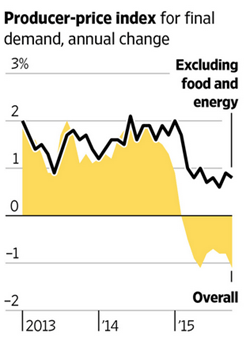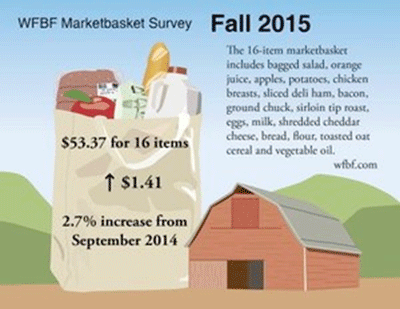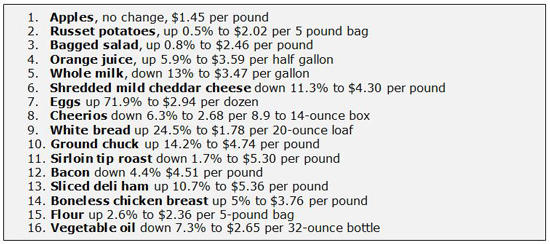My normally super-sweet baby sister barked at me like an angry dog when I told her that there simply isn’t any inflation in the US.
“You need to go to the grocery store with me. You are completely out of touch with reality,” she snapped.
Geez. Excuse me!
My sister, however, should know. She has two boys—one teenager and one college student that still lives at home—with big appetites, so she spends a lot of time and money at her local grocery store.
The topic came up because of the latest Producer Price Index (PPI) numbers from the Labor Department, which said that prices at the wholesale level actually declined by 0.5% in September. Over the last 12 months through September, the PPI has dropped by 1.1%... that’s the eighth consecutive 12-month decrease in the index.

Even if you exclude food and energy—the so-called core prices were down 0.3% in September.
Is my sister crazy? That depends on whether you believe the government’s heavily massaged numbers or people like my sister and farmers.
Here’s what I mean. While the Labor Department was spitting out its PPI numbers, the Wisconsin Farm Bureau Federation (WFBF) begged to differ.

The Wisconsin Farm Bureau Federation tracks the prices of key agricultural commodities that most American households use every day.
Sure, the price of a gallon of milk may be slightly different in Texas than in Wisconsin… but not by that much, and the price trends are usually very similar.
Well, according to the WFBF, the prices of basic grocery staples are rising.

The bureau tracks the cost of 16 widely used food items to come up with its Marketbasket index. The newest semi-annual survey of the 16 items rose to $53.37, up $1.41 or 2.7% compared with one year ago.
Nine of the 16 items surveyed increased in price while six decreased in price compared with WFBF’s 2015 spring survey. One item, apples, was unchanged.

“The survey’s meat items are the heaviest price pullers. As high-value items, they influence our survey’s overall price even if they only change slightly,” said Casey Langan of the WFBF.
So my baby sister was right!
Moreover, the WFBF doesn’t have an ax to grind when it comes to inflation. It is simply reporting the prices of a static basket of commonly used food items.
I don’t bring this up to prove how smart my sister is. Heck, any housewife in America could have told you the same thing. Moreover, my sister also complained about big price increases for pharmaceutical drugs, college tuition, and services like dry cleaning and automotive repair.
My points are that (a) you should always look at government-produced numbers with a skeptical eye, and (b) understand that the government, particularly the Federal Reserve, uses these heavily massaged numbers to justify its agenda.
For example, the lower the cost of living, the less the US government has to pay out in cost-of-living adjustments for Social Security and federal pension recipients.
And when it comes to interest rates, the Federal Reserve has proven that it doesn’t want to raise interest rates—and it will happily use the latest PPI numbers to prove its point that inflation isn’t a problem.
Fed officials have said they want to be “reasonably confident” inflation will move toward their 2% target before they raise interest rates. The latest PPI numbers will keep rates at zero for at least the rest of 2015 and well into 2016.
Daniel Tarullo, a member of the Fed’s Board of Governors, said last week that the Federal Reserve should not increase interest rates this year. “Right now my expectation is—given where I think the economy would go—I wouldn’t expect it would be appropriate to raise rates.”
Fellow Fed Governor Lael Brainard echoed that view and made the case for more patience last Monday.
Bottom line: You should absolutely believe the Fed when it says that it will “remain highly accommodative for quite some time.”
If you’re an income-focused investor, that conclusion has gigantic implications for how you should invest your money, and if you’re keeping your money in short-term CDs, T-bills, and money funds in anticipation of higher rates… you are making a big mistake.
Try my monthly newsletter, Yield Shark, for stock recommendations with high yield and great potential upside—with 90-day money-back guarantee.

Tony Sagami
30-year market expert Tony Sagami leads the Yield Shark and Rational Bear advisories at Mauldin Economics. To learn more about Yield Shark and how it helps you maximize dividend income, click here. To learn more about Rational Bear and how you can use it to benefit from falling stocks and sectors, click here.

